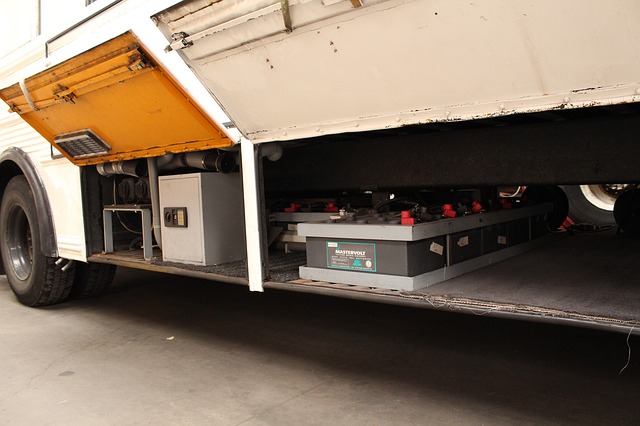Energy Density Of Lithium Ion Batteries
May 30, 2019 Pageview:1519
On a general note, the battery industry is always out to look for huge leaps in energy density.
This has led to a team situated in the United States to think that they can offer ten times the active performance of the current lithium-ion batteries using a technology that is based on fluoride.
The decreased atomic weight of fluorine basically means that rechargeable batteries that are based highly on the element can provide very high energy densities which can be roughly ten times more powerful than the regular theoretical values for the technology of lithium ion.
Meanwhile, fluorides are being considered to be a powerful contender for the next generation of high-density devices for energy storage. However, they are limited by temperature demands.
The sturdy state fluoride ion conducting batteries function at temperatures that are high above 150°C in order to make the electrolyte conduct properly. This is a notable difficulty for the normal cell.
Furthermore, all the solid-state batteries that are majorly merging the metal anode of lithium have the prospect to tackle the energy density problems of the conventional lithium batteries
Until currently, their utilization in practical cells has been finite due to the transfer resistance of lithium ion that is caused majorly as a result of the instability of the sturdy electrolyte against the metals of lithium.
Additionally, the latest sturdy electrolyte that reveals very high ionic conductivity and also high balance against lithium metals can as well be a genuine breakthrough for every solid-state battery that utilizes a Lithium metal anode
It is expected that this advancement will not just inspire the future efforts to discover lithium super-ionic conductors that are based on difficult hydrides, it practically opens up a newer trend in the solid electrolyte material field that may as well result in the development of high energy density electrochemical devices.
Every battery that has a solid state are actually potentially promising candidates for solving the current drawback of the latest lithium batteries. The issues to be resolved include:
· Flammability
· Finite energy density
· Electrolyte leakage, etc.
Energy Density Definition
On a general note, energy density is the volume of energy that can actually be kept in a particular mass of a system or even substance. Note that the high the energy density if wither a material or a system, the greater the volume of energy kept in its mass
Basically, energy can be stored in diverse types of systems and substances. Nonetheless, a material can actually release energy in four different types of reactions. The reactions are:
· Chemical
· Electrochemical
· Nuclear and;
· Electrical
In calculating the volume of energy available in a system, only the vitally useful or better still extractable energy is measured. In all scientific equations, energy density is denoted by U.
The density of energy is expressed generally in about two ways, though, the first one is the most popular and common one. They are:
· Volumetric Energy Density
This refers to the amount of energy contained in a system in comparison to its amount. It is commonly expressed in Wh/L that is watt-hours per liter. It can also be expressed in megajoules.
· Gravimetric Energy Density
This refers to the amount of energy contained in a system in comparison to its entire mass. It is commonly expressed in watt-hours per kilogram, i.e. Wh/kg or in megajoules.
However, having a very high density does not actually give information on how swiftly this energy can be utilized. Knowledge is contained instead in the power density of a substance, and this describes the rate in which the energy can be quickly put out.
Also, having a high density majorly goes along with power density that is low.
Comparison Of Energy Density In Battery Cells
Some of the better-known comparisons of energy density available in battery cells include:
· Nickel Cadmium (NiCD)
The batteries actively mature and are well understood, although they are comparatively low in their energy density. NiCD is used in cases whereby long life, economical cost, and high rate of discharge are vital.
Their main applications are biomedical equipment, two-way radios, expert video cameras, and also power tools. However, they contain toxic metals and are not user-friendly for the environment.
· Nickel Metal Hydride (NiMH)
This battery has a higher energy density when compared to NiCD, even at the expense of a decreased cycle life. NiMH has no toxic metal. Its applications include laptops and mobile phones.
· Lead Acid
These are the most economical in cases for bigger power applications wherein the weight is of small concern. They are the preferred choice for wheelchairs, emergency lighting, UPS system, and hospital equipment.
· Lithium Ion
They are the swiftest growing battery systems available in the market. Lithium batteries are used in cases where high energy density and lightweight is of vital importance. Although its technology is fragile, a protection circuit is needed to guarantee safety.? Most of its applications are on mobile phones and notebook computers.
Maximum Theoretical Battery Energy Density
The energy density needed for rechargeable batteries to even power a three hundred miles range electric vehicle on a distinct charge is roughly 600 Wh/kg. But, lithium batteries are not able to meet this need for now.
Technically, there is no known limit to the amount of energy that can be stored in a limited amount of space. Nonetheless, battery scientists have a metric that is known as maximum Theoretical specific energy.
Currently, the most energy dense batteries you can purchase in the market are lithium-ion batteries. They are practically in the 100-200 Wh/kg range.
To Wrap It Up
Basically, the metal of lithium is believed to be the significant anode material for every solid-state battery due to its high theoretical capacity of about 3860 mAh g-1 and its lowest prospect of about -3.04V versus the standard hydrogen electrode.
Nonetheless, lithium ion conducting sturdy electrolytes are a major feature of every solid state battery as a result of the ionic conductivity and balancing of the sturdy electrolyte that determines the performance of these batteries.
- Prev Article: Is Lithium Ion The Best Battery?
- Next Article: Drone Lipo Battery Referal
Leave Message
Hottest Categories
-
Hottest Industry News
-
Latest Industry News












